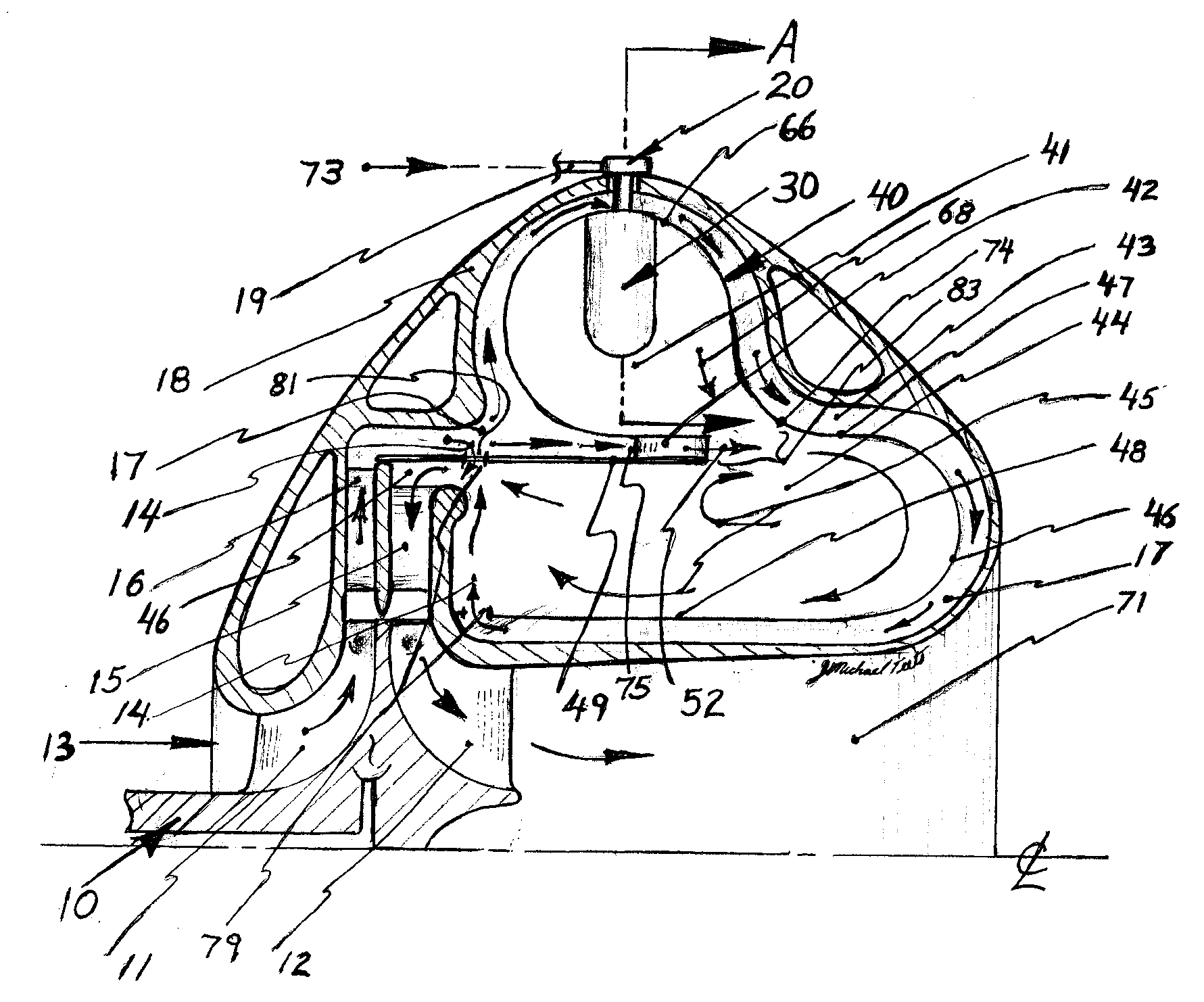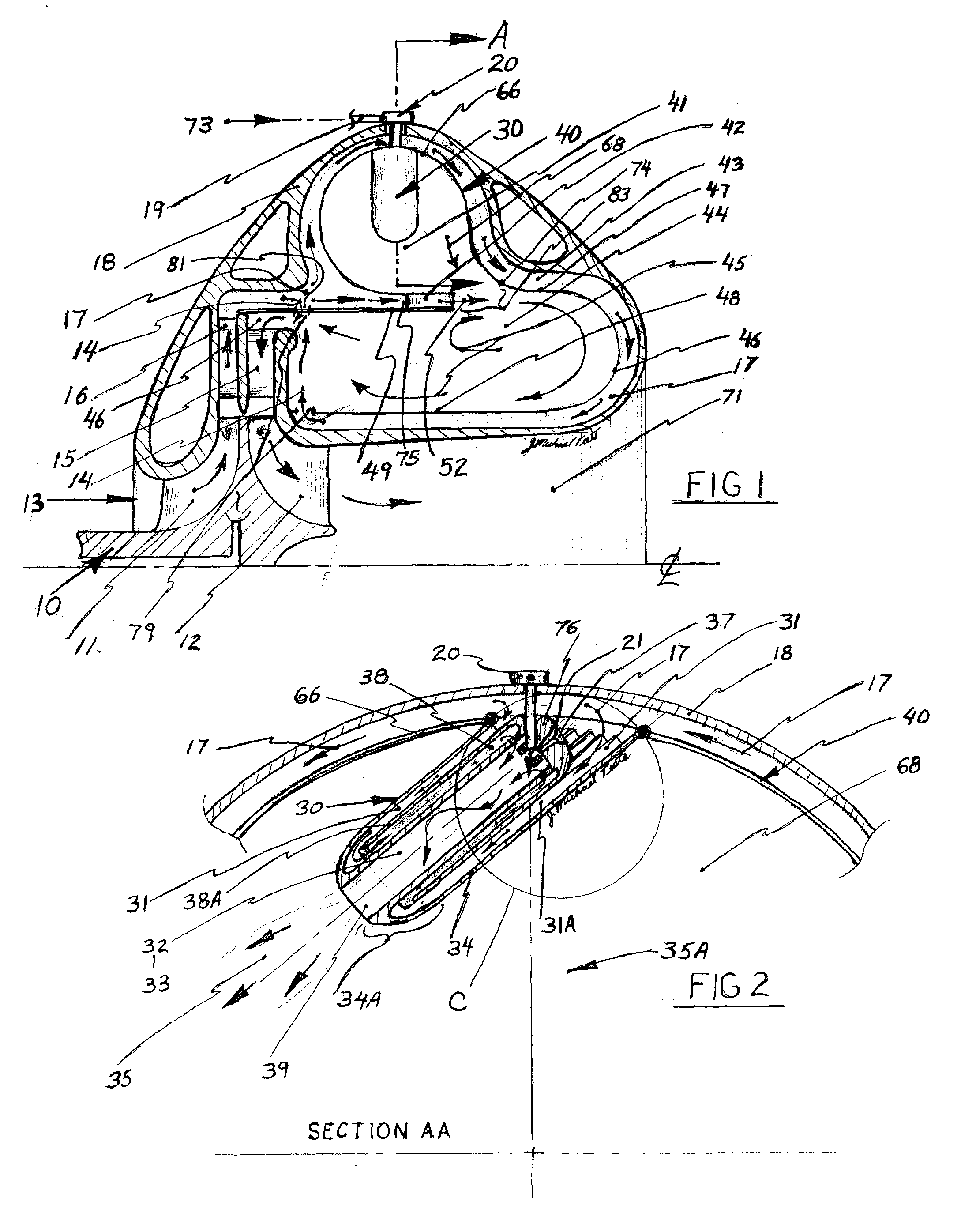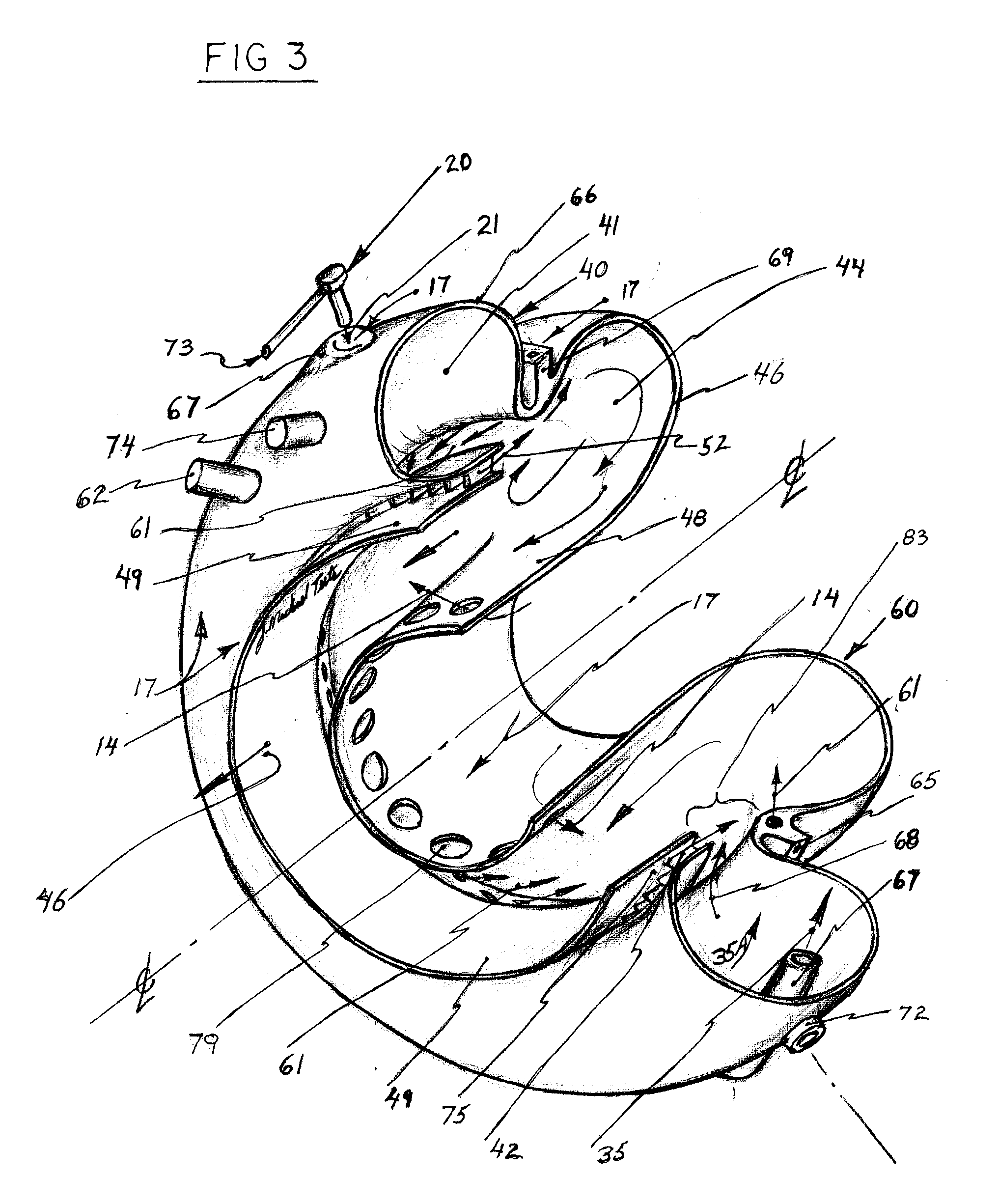Radially staged RQL combustor with tangential fuel premixers
a tangential fuel premixer and combustor technology, applied in the field of rql combustors, can solve the problems of combustor flame extinction, increase in cost, and increase in hardware control methods and maintenance, and achieve the effects of reducing cost, improving durability, and low emission
- Summary
- Abstract
- Description
- Claims
- Application Information
AI Technical Summary
Benefits of technology
Problems solved by technology
Method used
Image
Examples
Embodiment Construction
[0029]Turning now descriptively to the drawings, in which similar reference characters denote similar elements throughout the several views, the attached figures illustrate a radially staged RQL combustor assembly with tangential fuel premix-vaporizer chambers, and comprise of: a primary combustion zone with fuel injection means, tangentially oriented primary fuel / air premix chamber assemblies, a secondary air supply area, a reduced combustor flow area to receive secondary air supply for fuel / air premixing, a secondary combustion zone, a dilution air supply area, a dilution zone.
[0030]This Rich burn-Quick quench-Lean burn (RQL) combustor invention having a toroidal geometry primary combustion zone with tangential premix-vaporizers is generally positioned radially outboard of the secondary combustion zone. The fuel / air premix-vaporizer chamber 30 is a longitudinally elongated tubular form assembly with an outer tube 34 having internal cooling means 31 and a co-axial inboard fluid tur...
PUM
 Login to View More
Login to View More Abstract
Description
Claims
Application Information
 Login to View More
Login to View More - R&D
- Intellectual Property
- Life Sciences
- Materials
- Tech Scout
- Unparalleled Data Quality
- Higher Quality Content
- 60% Fewer Hallucinations
Browse by: Latest US Patents, China's latest patents, Technical Efficacy Thesaurus, Application Domain, Technology Topic, Popular Technical Reports.
© 2025 PatSnap. All rights reserved.Legal|Privacy policy|Modern Slavery Act Transparency Statement|Sitemap|About US| Contact US: help@patsnap.com



